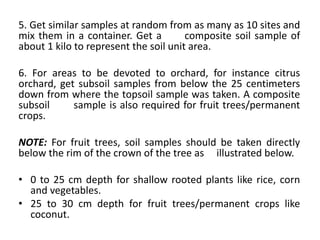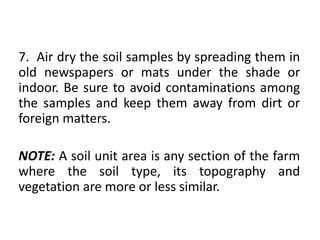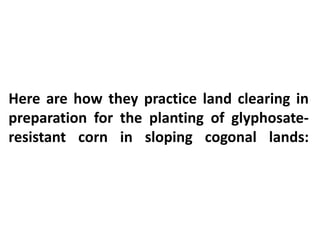The document outlines the critical processes of soil sampling and preparation for planting crops, emphasizing the significance of soil analysis for effective nutrient management and environmental protection. It details steps for collecting and preparing soil samples, including necessary tools and techniques, and explains the objectives and methods for land preparation, tillage, and planting systems. Additionally, it compares methods of transplanting seedlings with direct sowing, highlighting their respective benefits.













































